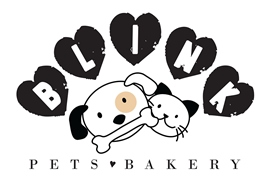Why Nova Scotian Kale Needs to be in Your Pet’s Diet (and Yours!) October 30 2015

We are facing the greatest public and pet health crisis of our time. Over 55 percent of pets and humans are overweight, and not only in our province but in all of North America. What do we do about it? It’s time to cut out as much processed kibbled or canned pet foods, which are loaded with inflammatory, high-glycemic carbohydrates, and start feeding our pets fresh, whole foods! Even a teaspoon a day of something fresh in your pet’s bowl is one teaspoon less a day of something processed.
Looking for something easy, fresh and local to add that isn't meat? Then why not try Nova Scotian kale! It’s a low-calorie food you can add to your pet’s diet with a ton of benefits. The dark, vibrant greens in kale leaves are rich in carotenoids, which travel throughout your pet’s body (and yours!) to scavenge free radicals and clean up the bad stuff that might be floating around inside.
And according to renowned holistic veterinarian Dr. Deva Khalsa, “Kale is also rich in elements that reduce the risk of cancer. Scientists have found that certain specific compounds found in kale clear carcinogenic substances more quickly. One study found that when dogs with cancerous tumors were fed kale, their tumors were smaller and grew more slowly than those in dogs not fed kale.”
Kale is a low-calorie, high-fibre and no-fat food. It’s great for aiding in digestion and elimination due to its great fibre content. It also contains 121 milligrams of omega-3 fatty acids and 92.4 milligrams of omega-6 fatty acids. These essential polyunsaturated fats contain anti-inflammatory properties.
To support even newer fresh food science and confirm the benefits of kale in pet nutrition, Dr. Jean Dodds’ new book, Canine Nutrigenomics: The New Science of Feeding Your Dog for Optimum Health, has the following entries:
•“Certain compounds in cruciferous vegetables have demonstrated the ability to stop the growth of cancer cells for tumors . . . Cruciferous vegetables including broccoli cauliflower, Brussels sprouts, cabbage and bok choy and kale.”
•“Isothiocyanates are phytochemicals that exert anti-cancer effects on the epigenome by inhibiting cancer cell proliferation and inducing apoptosis. Isothiocyanates are found in cruciferous vegetables such as broccoli, Brussels sprouts, cabbage, cauliflower, collards, kale, radish, turnip and watercress.”
Now of course this doesn’t mean you should feed bucket loads of kale to your pets either! We need to be careful, as kale contains oxalates. Oxalates are present in many fruits, vegetables, nuts and seeds, including green leafy vegetables like kale. Too many oxalates in one’s diet can cause calcium oxalate crystals and potentially form into kidney stones. But we’re talking a lot of kale here!
“Many people warned against feeding green leafy vegetables to dogs due to the presence of oxalates,” writes Dr. Dodds. “However, few ‘experts’ on this topic mention that many other foods, such as sweet potatoes, certain types of beans, beets, brown rice, buckwheat, and peanuts also contain high levels of oxalates, as do corn, wheat and soy, which we know are all found in commercial pet foods!”
The moral of story: If by adding just a spoonful of something fresh to a potentially highly processed diet can help reduce the cancer risk that is soaring in our pets today, would it not be worth it?
